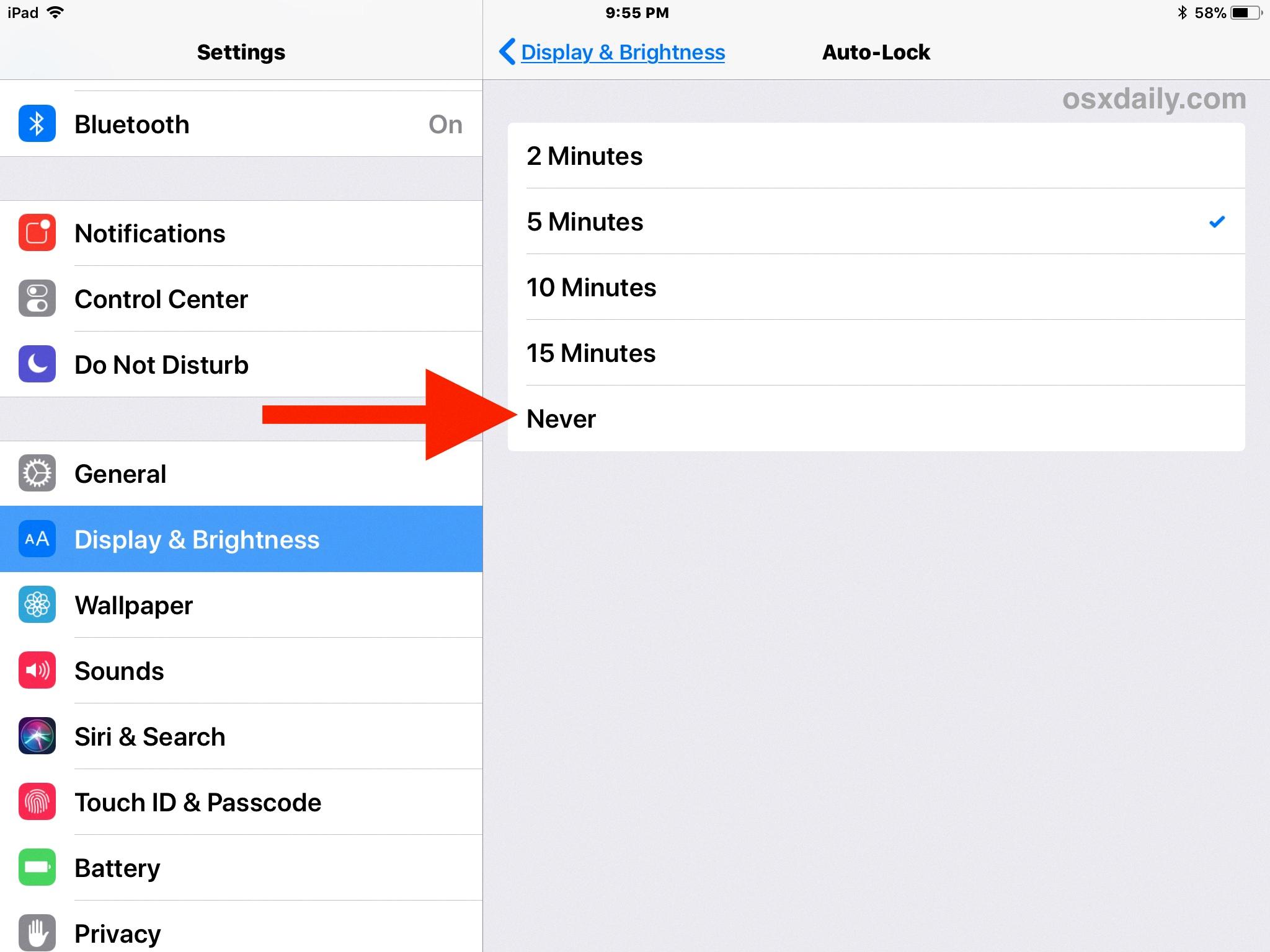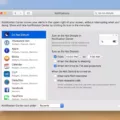Screen locks are an important security feature for smartphones, tablets and computers. They help protect your device from unauthorized access and keep your data safe. But sometimes, screen locks can be annoying and inconvenient. In this blog post, we’ll discuss how to turn off screen lock on various devices.
For Android devices, you can turn off the screen lock by going into the Settings menu and selecting Lock Screen & Security. From there, choose None as the security method. This will completely disable the lock screen and allw you to use your phone with no protection.
For iPhones, go to Settings > Touch ID & Passcode (or Face ID & Passcode). Enter your passcode if you have one set up. Then select Turn Passcode Off to disable it.
On Windows 10 devices, open the Start Menu and go to Settings > Accounts > Sign-in Options. Select Never in the Require Sign-in section to completely disable the sign-in process and lock screen.
Finally, for Macs, open System Preferences and select Security & Privacy > General tab. Uncheck Require Password under Automatic Login to turn off the lock screen for Macs running OS X 10.10 or later. If you’re usng an earlier version of OS X, click on Advanced Options and select Disable Automatic Login from the drop down menu instead of turning it off manually in System Preferences.
By following these steps you can easily turn off your device’s lock screen whenever it becomes a nuisance or inconvenience for you. Just remember that disabling your device’s security features like this can make it more vulnerable to malicious access by hackers or other attackers so use caution when disabling your security features!
Disabling the Lock Screen
To disable the lock screen on your Android phone, start by opening your Settings app. Then, go to Security and select Screen Lock. If prompted, enter your current lock screen code. You should then see the option to select None or Delete for your lock screen. Select either of those options, and you should have successfully removed the lock screen from your Android phone.

Source: osxdaily.com
Disabling the Lock Screen on an iPhone
To disable the lock screen on your iPhone, first open the Settings app. Once you’re in the Settings app, scroll down and select Face ID & Passcode. Enter your passcode to access the settings for this feature. Once you’re in, scroll down to the bottom and disable all of the options that allow access from your Lock Screen – this includes things like notifications, widgets, and other features that can be accessed from your lock screen. Once you’ve disabled all of these options, you’ll have successfully disabled the Lock Screen on your iPhone.
The Reasons Why Turning Off Lock Screen Is Not Possible
There coud be a few different reasons why you can’t turn your lock screen off. Firstly, it’s possible that your device’s security settings don’t allow you to do so. Some devices require a certain level of security before they will allow you to disable the lock screen. Secondly, it could be that your device’s operating system doesn’t have an option to turn off the lock screen. Lastly, if you’re using certain productivity or business-oriented apps, they may require that you have a lock screen enabled in order to use them.
Turning Off Screen Unlock
To turn off screen unlock, open the Settings app and select Security. Tap ‘Screen lock’, then select ‘None’. This will remove the need for a security code or pattern to unlock the device. Be aware, however, that disabling a lock screen may reduce your device’s overal security and make it easier for someone to access your data without your permission.
Changing Lock Screen Settings
To change your Lock Screen settings, open your phone’s Settings app, then tap Security. If you don’t see the Security option, check your phone manufacturer’s support site for help. Once you’re in the Security menu, tap Screen Lock and select the type of lock screen you’d like to use. You can choose from PIN codes, passwords, patterns, or biometric options like fingerprint scanners. After making your selection and setting up the new lock screen, make sure to save your changes.
Locating the Screen Lock on My Device
For Android: You can find your screen lock in the Settings menu on your device. Once you are there, scroll down unil you find the “Security” or “Lock Screen and Security” option and tap it. This is usually located under the “Personal” section on Android 4.2 or higher. Here you can set up a passcode, PIN, pattern, fingerprint or face recognition to protect your device and its contents.
Accessing Lock Screen Settings on an iPhone
On an iPhone with Face ID, the Lock Screen settings can be found in Settings > Face ID & Passcode. On an iPhone with a Home button, they can be found in Settings > Touch ID & Passcode. Once you find the appropriate settings page, you can adjust the options to suit your needs. Please note that if you allow USB connections when your iPhone is locked, it will disable an important security feature of your iPhone.
Turning Off Auto Lock on an iPhone
The reason you can’t turn off auto lock on your iPhone is becaue it’s in Low Power Mode. Low Power Mode is a feature designed to help extend your battery life, and when it’s enabled, auto-lock is restricted to 30 seconds. In order to turn off auto lock, you’ll need to disable Low Power Mode. To do this, simply open the Settings app and toggle the switch for Low Power Mode off.
Turning Off Lock Screen on Android
To turn off the lock screen on your Android device, start by opening the Settings app from your home screen. Then, find and click the Security or Location & Security option. From there, tap on Lock Screen Password and then select Screen Lock. Enter your password to unlock the phone, then choose None and confirm it to disable any lock screen. Once you have completed these steps, your lock screen will be disabled and you’ll no longer be asked for a password or pattern when unlocking your device.
Turning Off Auto Lock on Android Devices
To turn off auto-lock on your Android tablet, first open the Settings menu. Then tap the Security or Security & Location option, and select Screen Lock. Finally, tap None to disable auto-lock. This will prevent your tablet from automatically locking itself aftr a period of inactivity.
Disabling the Lock Button on an Android Device
To disable the lock button on your Android device, you will need to use an app called SureLock. First, download and install SureLock onto your device. Then, access SureLock Settings by tapping on the SureLock Home Screen 5 times and using the secret passcode. Once you’re in the settings, click Disable Hardware Keys. On the Disable Hardware Keys prompt, select the lock button and then click OK. This will disable the lock button on your Android device.
Turning Off Screen Timeout
To turn off the screen timeout on your device, start by accessing the settings menu either through the notification panel or the app drawer. Once you are in, click on the ‘Display’ icon and then click on ‘Screen Timeout’. Now select ‘Never’ to disable the screen timeout and your phone will no longer automatically turn off its display.
Understanding the Lock Screen on Android Devices
Lock Screen on Android is a feature that provides users with security and convenience. It is the first thing you see when you turn on your device, and it can be used to access certain features without having to unlock your phone. It also displays notifications, such as missed calls, messages, and other alerts. You can customize your lock screen by adding widgets or wallpapers, or by setting a pattern, PIN, or password for added security. For Pixel 6 and 6 Pro owners experiencing issues with their fingerprint sensors, Lock Screen can be an even more useful feature.
Removing Home Screen Layout Lock
To get rid of home screen layout lock, you’ll need to access the Home Screen settings. To do this, you can either long-press on the home screen and select Settings, or pull down your notification shade and select Settings > Home Screen. Once in the Home Screen settings, tap the toggle called Lock Home Screen Layout to turn it off. This will allow you to freely customize your home screen by rearranging app icons and widgets, adjusting wallpaper and themes, and more.
The Meaning of Home Screen Locked
Home Screen Locked is a feature available in Android smartphones that prevents accidental changes to the home screen layout. When enabled, it will stop you from accidentally moving or deleting app icons, widgets, and other items on the home screen. It also prevents you from adding new items to the home screen without fist unlocking the Home Screen Locked feature. To unlock the Home Screen Locked feature, simply head to your phone’s Settings > Home Screen and toggle on the option for “Unlock Home Screen Layout”.
Changing the Lock Screen on an iPhone
Yes, you can change the Lock Screen on your iPhone. Swipe left or riht to choose from existing Lock Screens, and long press one to set it as your Lock Screen. Alternatively, tap Customize to personalize the currently selected Lock Screen, or tap the blue + button to create a new one from scratch. You can also customize existing Lock Screens by adding widgets, background images, and more.
Turning Off Screen Lock Password on Samsung Devices
To turn off Screen lock password on a Samsung device, start by going to the Settings app and selecting Lock screen from the list of options. Next, tap on Screen lock and then enter and confirm the saved Password screen lock. After that, press Continue and then select None to disable Password screen lock. Finally, your device will be wihout any Screen lock password.
Causes of Frequent Phone Screen Shutdowns
The most likly cause of your phone screen turning off is that the display timeout settings are set too low. This means that after a certain amount of time, the display will turn off to conserve battery. You can adjust this setting in your phone’s settings menu by going to Display > Sleep. You can choose a longer duration for the display timeout, or even set it to ‘Never’ if you don’t want it to turn off at all. Another possible cause could be that your phone’s battery is low and needs to be recharged.
Keeping Phone Screen On Constantly
To keep your phone screen on constantly, you will need to enable the Always On Display feature. You can do this by opening the Settings app on your phone, tapping “Home screen, Lock screen & Always-On Display” and selecting “Always-On Display.” From here you can choose from one of the default options or create your own custom settings. After that, simply toggle the “Always-On Display” switch to turn it on. This will keep your phone screen on constantly without haing to manually press any buttons or interact with the phone.
Conclusion
Screen lock is an important feature that helps protect your device from unauthorized access. It prevents others from accessing your device without your knowledge or permission, and can even protect you in the event of a lost or stolen device. When enabled, it requires a password, pattern, or PIN to unlock the screen before any applications can be accessed. Turning off screen lock is relatively straightforward and can be done in just a few steps. It’s important to remember that turning off the screen lock doesn’t eliminate all risk of unauthorized access; if someone else has physical access to your device they may still be able to bypass it. Additionally, any data stored on the device culd still be vulnerable if not properly backed up or encrypted, so it’s essential to take steps to ensure that your data is secure before disabling the screen lock. Ultimately, when used in conjunction with other security measures, disabling the screen lock can provide additional convenience and flexibility for managing your mobile device without compromising its overall security.








